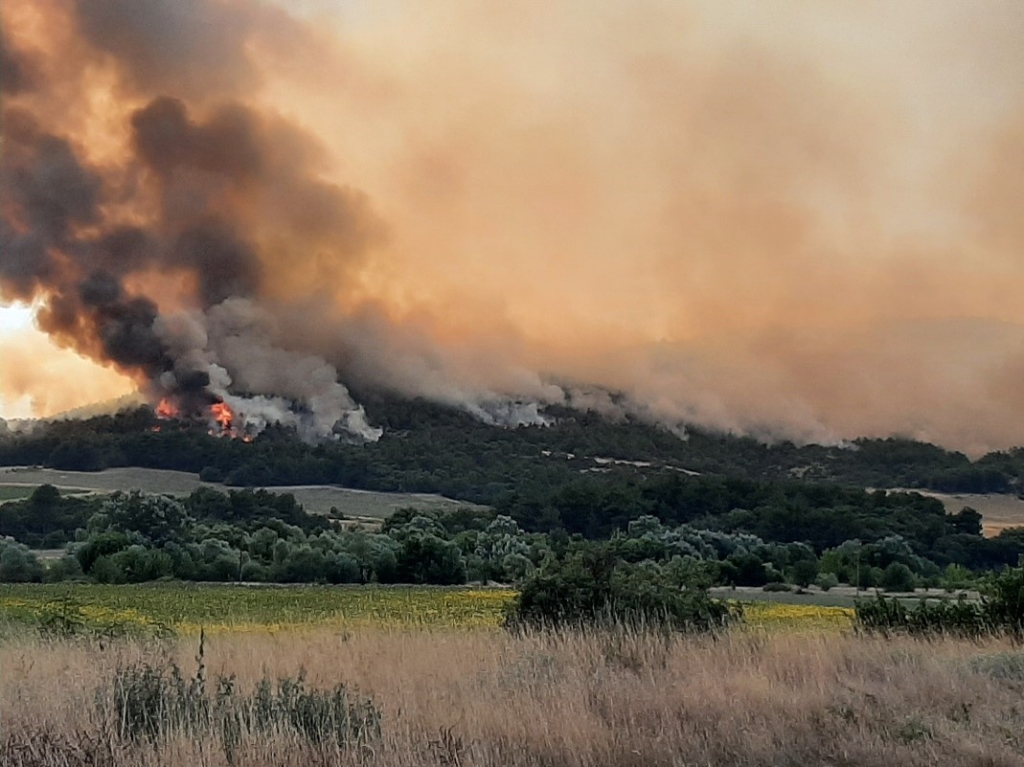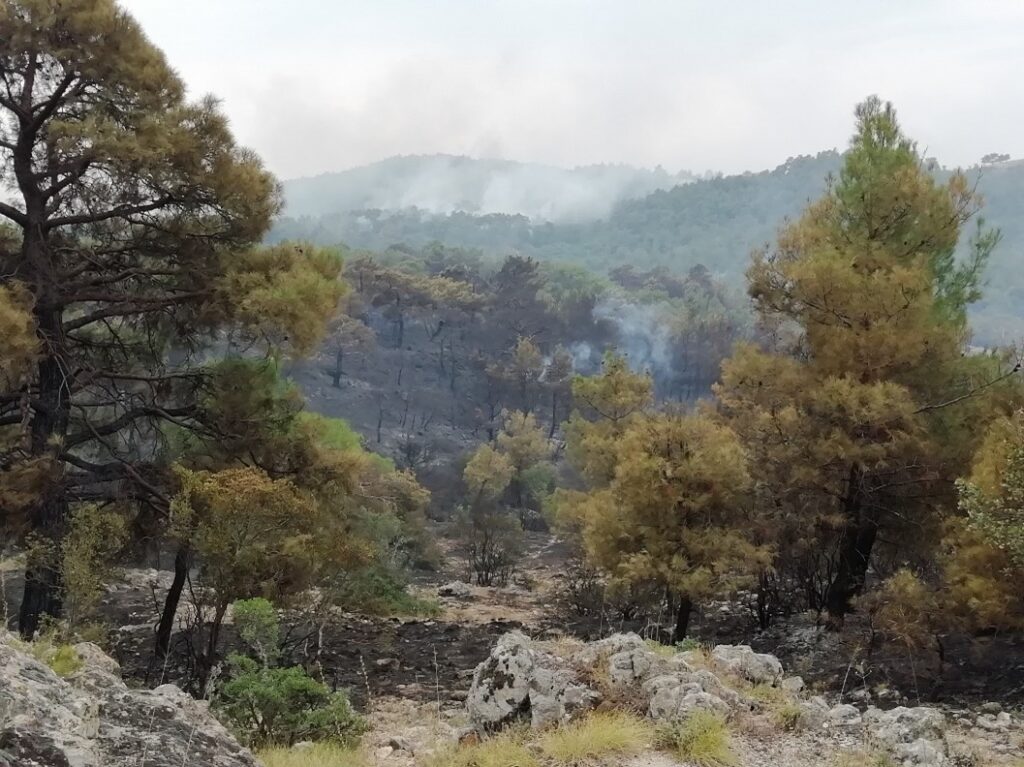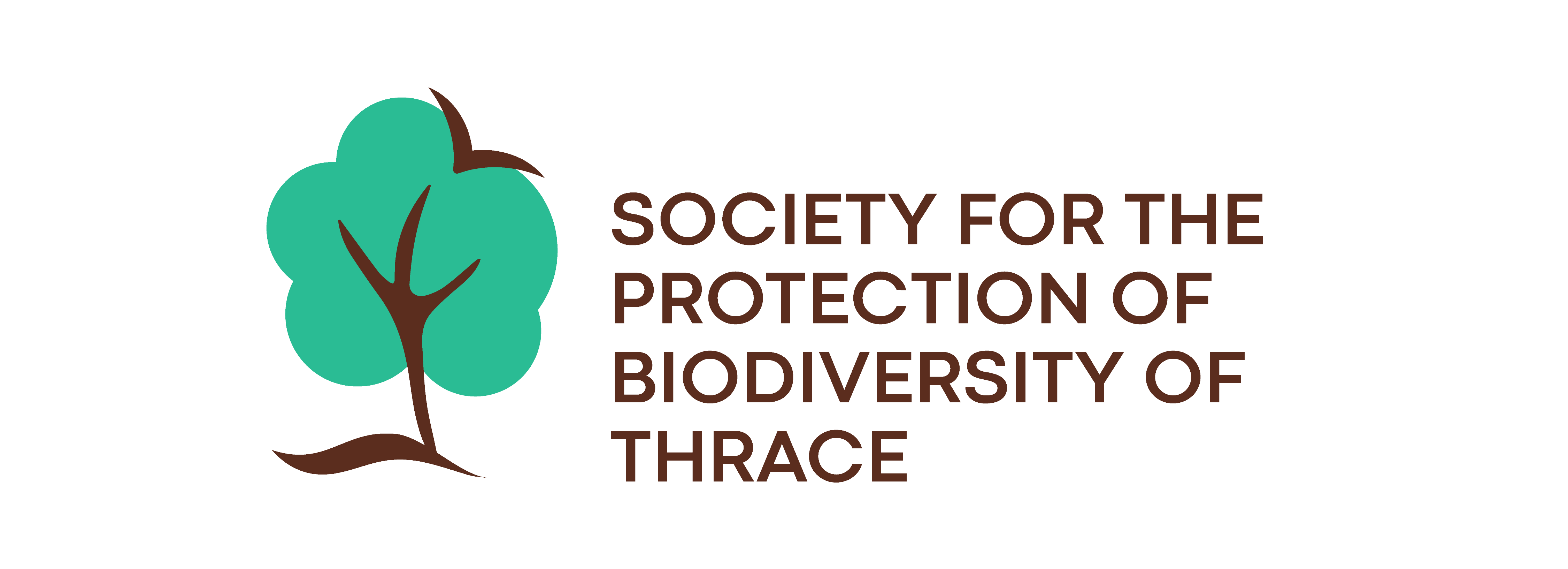Fire threatening the Dadia forest

In 2022, a wild fire severely damaged the Dadia–Lefkimi–Soufli Forest National Park as it affected a forest area of 45,412 hectares, most of which was within Zone A. The fire burned the forest with varying intensity, leaving behind burnt or partially burnt forests. In detail, based on satellite images, the fire completely burnt 22,097 acres but left islands of unburned vegetation totalling 6,153 acres, whereas in an area of 16,072 acres the fire burnt the low vegetation, but without affecting the trees. The settlement of Dadia, the monastery of Dadia, as well as the Eco-tourism infrastructures next to the forest were saved from the seven-day fire with the help of many residents of the area who contributed to the work of the fire service. The nests of cinereous and Egyptian vultures were also saved and these are the rarest birds of prey and are symbols of the National Park.
Many mature pine forests were burnt with the result that for many years, until the trees grow back, these forest areas can not sustain the nests of various species of birds of prey, and especially the rare eagles that need large trees to support their nests. At the same time, the "symbol" of the area, the observatory for birds of prey, which is known throughout Greece and abroad and to where thousands of visitors have been guided, was also burnt down.

The wounds will heal, the forest will regenerate and the observatory will be built again, possibly more beautifully and with more modern facilities than the old one. However, the degradation in the ecological value of the National Park is inevitable for some of the species it supports. It is understandable that the area burnt in 2022, when combined with the large Lefkimi fire of 2011 and the two smaller fires in the Lefkimi-Provatonas area in 2020 and 2021, means that a large proportion of the southern and eastern part of the National Park has now lost many of its mature pine trees.
Fires like this highlight the effects not only of the climate crisis but also of the increasing forest thickness that results in the increased severity of fires. Pine forests, like those of this National Park and in other Greek areas, have increased in tree and shrub density due to the abandonment of animal husbandry that kept the vegetation under the trees sparse and accessible to animals and humans. Livestock also maintained grasslands and open forest structure, which allowed firefighters to have safe access to put out fires. The forests have spread to the extent of even closing off mountain fields that are not cultivated. The mosaic landscape that the region of Thrace inherited from its traditional agricultural practices and which provided food and habitats to many rare bird species has now become degraded. In order to restore this mosaic character, it is now crucial to examine and undertake future forest management to include necessary alternatives to the antidote that comes from having the benefits of livestock grazing and field cultivation because the resumption these now seems unlikely, due to a lack of support for them at a national level as being fundamental to the primary sector or in the maintenance of village populations.
